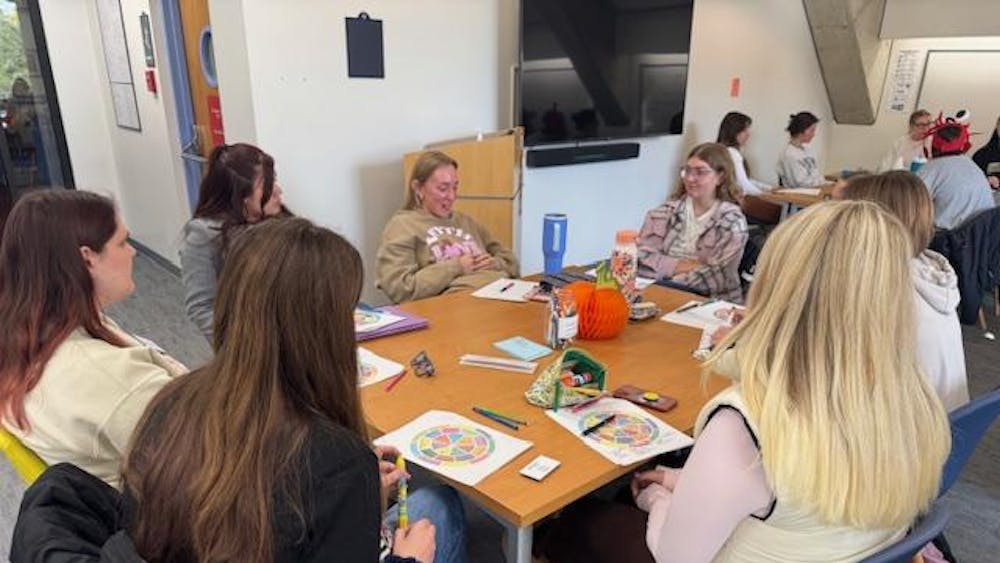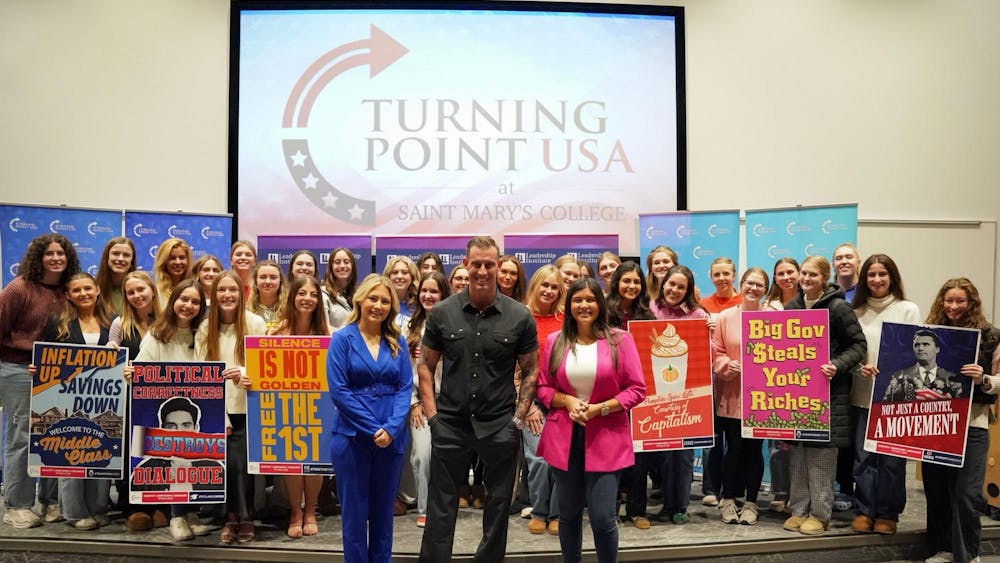John H. Garvey, president of The Catholic University of America and former Notre Dame Law professor, delivered the keynote address of the Notre Dame Law Review Symposium on Friday afternoon and addressed the recent shift in focus in the religious liberty debate. This year’s symposium is titled “Religious Liberty and the Free Society: Celebrating the 50th Anniversary of ‘Dignitatis Humanae’” and is part of the 2015-16 Notre Dame Forum.
The ideas of religious liberty as “freedom from” and “freedom to” are not in opposition, but parts of the same idea, he said.
“We can’t talk about religious liberty without invoking both of them,” he said. Liberty, in the constitutional sense, is always a right against state interference, a ‘freedom from.’ Liberty is also always a right to do something, a ‘freedom to.’ The right to speak, to assemble to practice religion, to get married, to have sex.”
Garvey said there have been two phases in the modern debate over religious liberty.
“The first phase [was] in which the opponents of religious freedom focused on freedom from state interference. The argued that religion is an important social and theological good which deserves our utmost respect, but nevertheless, in this particular case the state should prevail because its concerns are especially weighty.”
We are currently in the second phase of the debate of religious liberty, he said.
“People are arguing that the religion which we are free to practice is a more limited one than we might suppose,” he said. “In this phase, it is not a matter of weighing private concerns against public ones and finding the public ones more weighty, but the private concerns simply don’t count as ‘religious,’ so we don’t get to balancing them against the concerns of the state.”
Garvey said freedom has two aspects, and that assertion of rights is just the beginning, not the end, of a legal argument.
“Because it’s a right to act, people can invoke it in any number of instances and ways and cases,” he said. “What it does is force the government to justify its interference, but sometimes government’s reasons will be important enough that they win and you lose. That doesn’t mean that you don’t have a right, it just means that your right was defeasible — it didn’t win in this case. In constitutional law we describe this process about making judgements on defeasible rights as part of balancing private rights against public concerns.”
The government balances private rights against public concerns whenever it makes a law, he said.
“But when the private actor has a right, the government must offer an especially good reason for interfering. So the right protects us from state interference, and we might describe this handicap as the ‘weight’ or the ‘value’ of the right we’re talking about,” he said. “For a long time the practice was to ascribe a great weight or value to claims of religious freedom and to rule in favor of the state only if could show, what the lawyers say, is a compelling reason for the prohibition or restriction it wishes to impose.”
In 1990, the Supreme Court considerably limited the protection it would offer in cases on religious liberty in the case of Employment Division v. Smith.
“It was a case that allowed a government agency to discharge two members of the Native American Church for ingesting peyote,” he said. “The Court was willing to assume that taking peyote was a religious act, just like taking wine at a Mass or a seder. The Native American Church, in the Court’s mind, deserved just as much protection as Catholics and Jews. … But the Court said the First Amendment ruled against laws prohibiting the free exercise of religion, but just the laws that singled out religion for special bad treatment.”
However, laws that aren’t directed specifically at religions and are generally applicable, like those that state no one may ingest controlled substances, can have indirect effects on religion, Garvey said.
“But these effects are unintended and the state doesn’t need to offer any special defense of them,” he said. “We would, the Court said, be ‘courting anarchy’ with a demand like that, and the danger of anarchy, the Court said, ‘increases in direct proportion to the society’s diversity of religious beliefs and its determination to coerce or suppress none of them.’”
In recent years, the attacks on religious freedom have centered on the very meaning of religion, rather than the state concerns that might outweigh them, Garvey said. Instead, the debate focuses on who is considered a religious actor and what is a religious activity.
“The Obama administration has asserted, for example, that for-profit corporations are not religious actors,” he said.
Garvey said the University’s lawsuit against the HHS mandate is an example of the conflict over whom can be considered a religious actor.
“My own University, and yours, sued the Department of Health and Human Services in 2013 to challenge the regulations under the Affordable Care Act. The regulations require a certain group of plans to cover sterilization procedures and prescriptive contraceptives, including some that can induce abortions,” he said. “We think, your University thinks, it interferes with religious freedom because it requires it to provide services that we view as sinful. The regulations exempt what they call ‘religious employers’ from the requirement. These institutions that are viewed as religious employers don’t have to provide coverage and their employees don’t get it.
“But ‘religious employer’ is defined very narrowly — it includes churches and religious orders, but not Catholic universities like Notre Dame or the Catholic University of America, not Catholic Charities. Nonprofits like us are classified as simply ‘eligible organizations.’ We get an accommodation of sorts, we don’t have to provide the mandated services ourselves, but we are required to contract with an insurance company, or if we, like you, self-insure, a third-party administrator, who will provide the objectionable coverage.”
With the advent of laws protecting gay rights, Garvey said, the debate becomes a battle between religious liberty and human rights.
“So the culture doesn’t see this as even a collision of rights, like when the workings of a free press may collide with a defendant’s need for a fair trial. Refusing service to gay patrons is intrinsically wrong and not ‘religion,’ just as obscenity, libel and true threats are not ‘speech’ in the First Amendment’s sense, as well.”
Garvey said the shift in legal theory, from the focus on public concerns to the focus on private ones, says something important about the future of religious liberty, and it ought to be a matter of real concern.
“Something very different is going on when people start to agree that Notre Dame is not a religious employer or that a photographer can be drafted into the nuptials of a same-sex couple. When this happens, we have a much more serious problem,” he said. "Disputes about the meaning of religion are all-or-nothing affairs. Acts that don’t count as religious or constitutional are … entitled to no more legal protection that trout-fishing.”
Garvey said this shift is a reflection of growing cultural indifference towards religion.
“I think the culture itself less about religion, and because it does, the proponents of religious freedom find themselves asking for protection of an activity that is unimportant,” he said. “If we don’t care about religion, we won’t care about religious freedom.”
The only really effective response to the contemporary assault in religious liberty is prayer, Garvey said.
“I don’t mean this in a despairing or pious sense. I mean to say that the practice we’re defending has to matter to us, above all things. If it does, our institutions will protect it. If it doesn’t, the case is lost.”
Read More
Trending









